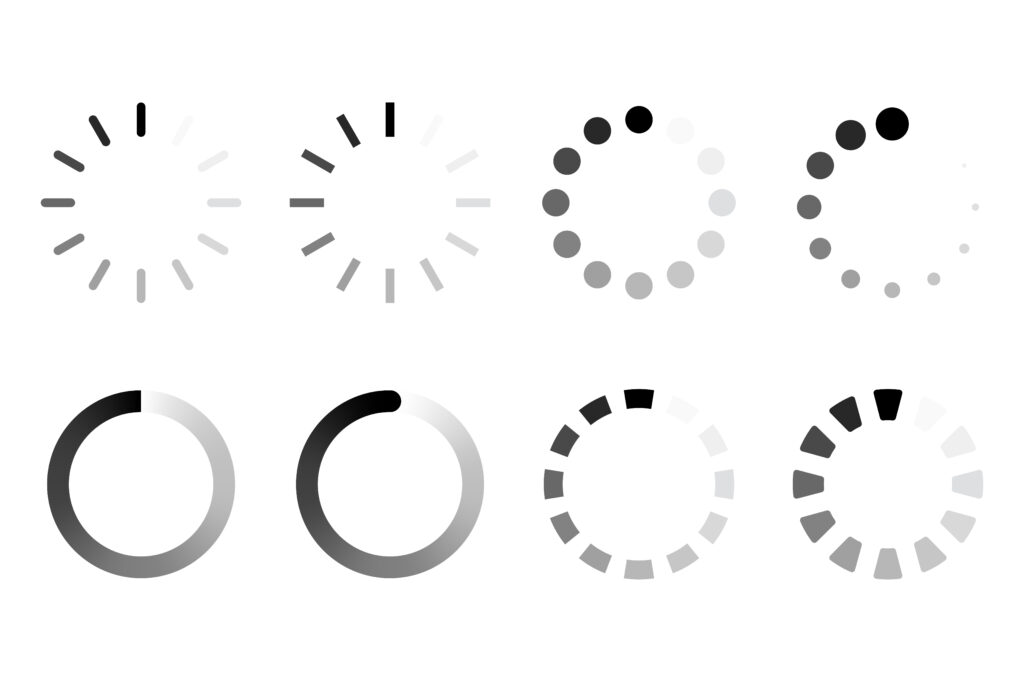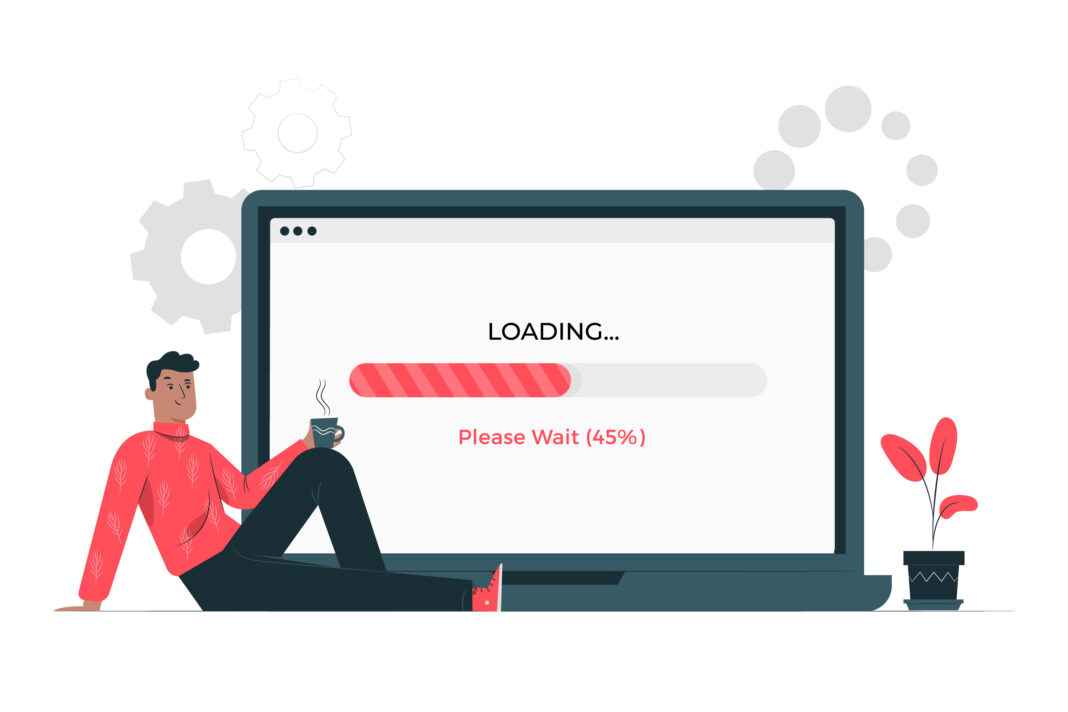Website speed is one of the most critical factors for user experience, search engine rankings, and conversion rates. A slow website drives visitors away, increases bounce rates, and negatively impacts revenue. Studies show that a 1-second delay in page load time can lead to a 7% reduction in conversions (Akamai). With mobile users expecting pages to load in under 3 seconds, optimizing your website’s performance is no longer optional—it’s essential.

This guide provides a deep, step-by-step breakdown of how to diagnose and fix speed issues. We’ll cover everything from image optimization and caching to server-level tweaks and advanced performance strategies. By the end, you’ll have a lightning-fast website that keeps users engaged and ranks higher on Google.
1. Why Website Speed Is Critical for Success
1.1 Impact on User Experience
- 53% of mobile users abandon a site if it takes longer than 3 seconds to load (Google).
- Slow-loading pages frustrate visitors, leading to higher bounce rates and lower engagement.
- Fast websites improve time-on-site and interaction rates (clicks, scroll depth, conversions).
1.2 SEO and Google Rankings
- Google’s Core Web Vitals (LCP, FID, CLS) are ranking factors.
- Faster sites get better crawl budgets, meaning Google indexes more pages.
- Slow speeds hurt mobile rankings, which is critical since 60% of searches come from mobile.
1.3 Conversion Rates and Revenue
- Walmart saw a 2% increase in conversions for every 1-second improvement in load time.
- Amazon found that a 100ms delay cost them 1% in sales.
- Faster checkout processes reduce cart abandonment rates.
2. How to Test Your Website Speed (Advanced Methods)
Before optimizing, you need accurate speed measurements. Here’s how to test properly:
2.1 Google PageSpeed Insights
- Analyzes mobile and desktop performance.
- Provides actionable recommendations (e.g., “Reduce unused JavaScript”).
- Scores your site from 0 to 100 (90+ is excellent).
2.2 GTmetrix
- Tests from multiple global locations (Canada, UK, Australia).
- Shows full waterfall charts to identify slow-loading elements.
- Provides video playback of page loading to spot rendering issues.
2.3 WebPageTest
- Allows custom test locations and connection speeds (3G, 4G, Cable).
- Measures Time to First Byte (TTFB), Start Render, and Fully Loaded time.
- Compares your site against competitors.
2.4 Lighthouse (Chrome DevTools)
- Run audits directly in Chrome (Press
F12> Lighthouse). - Checks performance, accessibility, SEO, and best practices.
- Helps debug JavaScript execution delays.
3. Optimizing Images for Maximum Speed
Images are the biggest performance bottleneck for most websites. Follow these advanced optimization techniques:
3.1 Choosing the Right Image Format
| Format | Best For | Optimization Tips |
|---|---|---|
| JPEG | Photographs | Use 60-70% quality for balance |
| PNG | Logos, transparency | Use TinyPNG for lossless compression |
| WebP | All image types | 30% smaller than JPEG (use CDN or plugin) |
| AVIF | Next-gen compression | 50% smaller than WebP (limited browser support) |
3.2 Advanced Compression Techniques
- Lossless vs. Lossy Compression:
- Lossless (PNG) retains quality but larger files.
- Lossy (JPEG) reduces file size with slight quality loss.
- Tools to Use:
- ShortPixel (WordPress plugin)
- Squoosh (Google’s open-source tool)
- ImageOptim (Mac app for batch compression)
3.3 Lazy Loading Implementation
- Native HTML Lazy Loading:htmlCopyDownloadRun<img src=”image.jpg” loading=”lazy” alt=”Description”>
- JavaScript-Based Lazy Load:
- Use Lozad.js or WP Rocket (WordPress).
- Only load images when they enter the viewport.
3.4 Responsive Images with srcset
- Serve different image sizes based on screen resolution:htmlCopyDownloadRun<img src=”small.jpg” srcset=”medium.jpg 1000w, large.jpg 2000w” sizes=”(max-width: 600px) 100vw, 50vw”>
- Reduces unnecessary data transfer for mobile users.
4. Minifying and Combining CSS, JavaScript, and HTML
4.1 Minification Explained
- Removes whitespace, comments, and unused code.
- Tools:
- CSS: CSSNano, CleanCSS
- JavaScript: UglifyJS, Terser
- HTML: HTMLMinifier
4.2 Combining Files for Fewer HTTP Requests
- Merge multiple CSS/JS files into one to reduce requests.
- WordPress Plugins:
- Autoptimize (combines & minifies)
- WP Rocket (advanced optimization)
4.3 Deferring and Asynchronous Loading
- Defer JavaScript:htmlCopyDownloadRun<script src=”script.js” defer></script>
- Async for Non-Critical Scripts:htmlCopyDownloadRun<script src=”analytics.js” async></script>
5. Leveraging Browser Caching for Repeat Visitors
5.1 How Browser Caching Works
- Stores static files (CSS, JS, images) locally.
- First visit: Downloads all assets.
- Subsequent visits: Loads from cache (faster).
5.2 Setting Cache Headers
- Apache (.htaccess):apacheCopyDownloadExpiresActive On ExpiresByType image/jpg “access plus 1 year”
- Nginx:nginxCopyDownloadlocation ~* \.(jpg|jpeg|png|css|js)$ { expires 365d; }
5.3 Cache Plugins for WordPress
- WP Super Cache (simple caching)
- W3 Total Cache (advanced settings)
- LiteSpeed Cache (server-level optimization)
6. Enabling Gzip Compression
6.1 What Gzip Does
- Compresses text-based files (HTML, CSS, JS) by 60-70%.
6.2 How to Enable It
- Apache:apacheCopyDownload<IfModule mod_deflate.c> AddOutputFilterByType DEFLATE text/html text/css application/javascript </IfModule>
- Nginx:nginxCopyDownloadgzip on; gzip_types text/plain text/css application/json application/javascript;
7. Reducing Server Response Time (TTFB Optimization)
7.1 Causes of Slow TTFB
- Overloaded server
- Unoptimized database
- Slow DNS lookup
7.2 Fixes for Faster TTFB
- Upgrade hosting (Kinsta, SiteGround, AWS)
- Use a CDN (Cloudflare, StackPath)
- Optimize database (remove spam, clean post revisions)
8. FAQ: Common Website Speed Questions
Q1: Does WordPress slow down websites?
- Not inherently, but bloated themes/plugins do. Optimize with caching and lightweight themes.
Q2: How often should I test my website speed?
- Monthly, or after major updates.
Q3: Are free CDNs good enough?
- Cloudflare’s free plan works for small sites, but upgrade for advanced features.
9. Final Checklist for Maximum Speed
✅ Optimize images (WebP, lazy load, compression)
✅ Minify & combine CSS/JS
✅ Enable caching & Gzip
✅ Reduce TTFB (better hosting, CDN)
✅ Monitor speed monthly
10. Conclusion
A fast website is non-negotiable in 2024. By following these steps, you can cut load times by 50-80%, improve SEO rankings, and boost conversions. Start with one optimization today and track improvements using Google PageSpeed Insights.
Need more help? Leave a comment below, and I’ll guide you through advanced optimizations!

